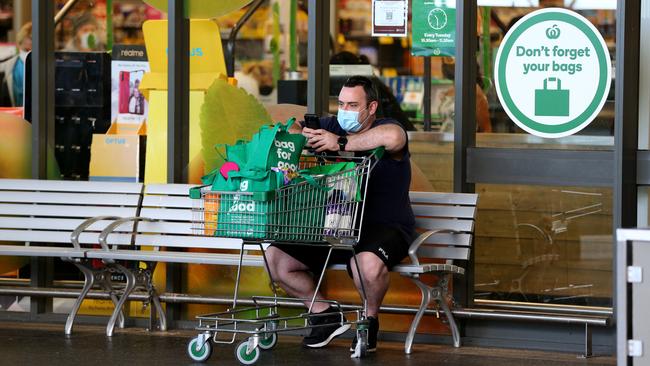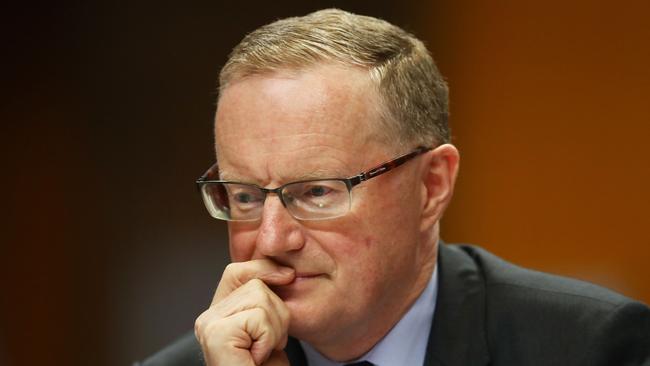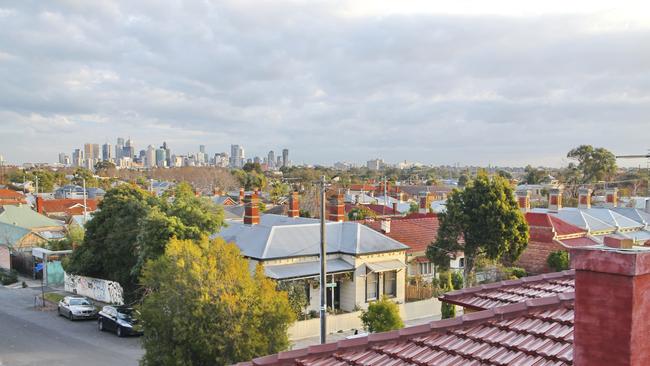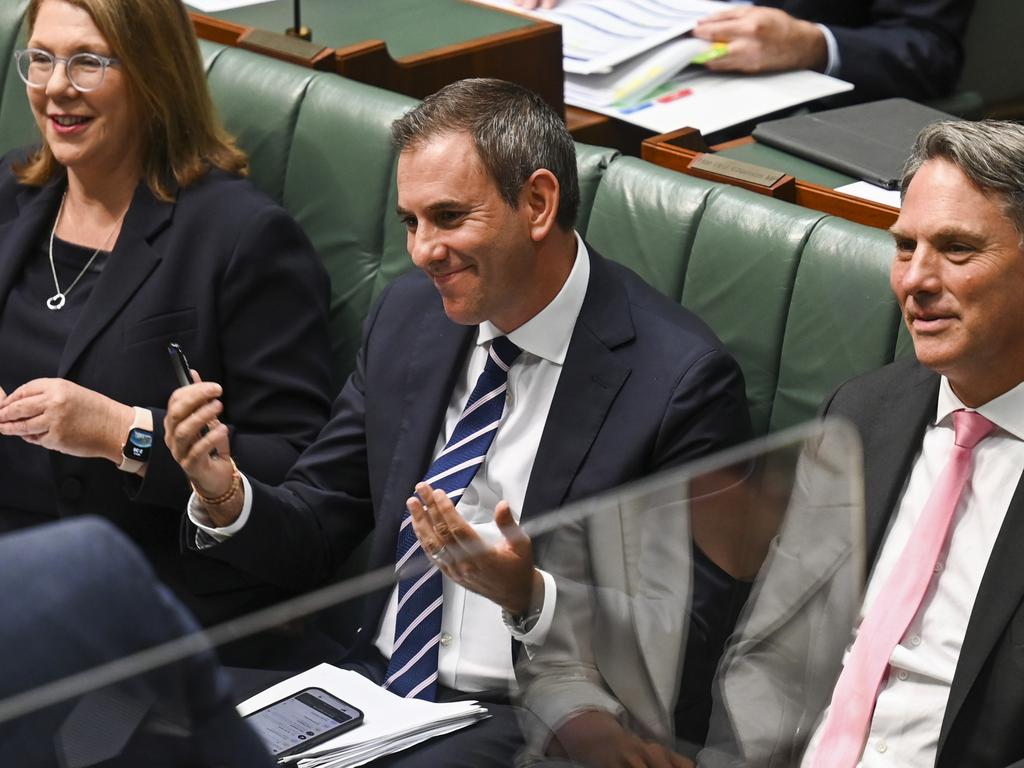Interest rates: Buckle up for a world of hurt as RBA wields its blunt instrument
To a large degree, the Reserve Bank is flying blind. Even if the pilots manage it, a soft economic landing may feel like recession for indebted families.

The RBA has a powerful voice and a blunt policy tool at hand to bring inflation back to 2 to 3 per cent. Its cash rate target, now 3.35 per cent, sets the tempo at the top of the financial system, rather than exerting direct control of consumer prices, home lending, household spending, investment and the like.
To a large degree, the bank is flying blind. The models at its disposal are not without fault at the best of times and proof of function is slow to roll in; officials the world over do not fully understand how economies and financial systems have been remade by the pandemic, the energy shock from Russia’s assault on Ukraine, cheap money and crisis-era fiscal splurges.
“There is uncertainty around the timing and extent of the expected slowdown in household spending,” Lowe said after Tuesday’s rates decision. He added that some families had chunky savings buffers, while others “are experiencing a painful squeeze on their budgets” because of higher interest rates and the rise in living costs.
Lowe noted the drop in home values was hitting household wealth, while doubts abounded about the course of the global economy. “These uncertainties mean that there are a range of potential scenarios for the Australian economy,” he said.
The RBA concedes the path to a “soft landing”, meaning we avoid recession, “remains a narrow one”. Its current thinking, in line with Treasury and international bodies, is growth slows to 1.5 per cent this year and next. Many rich nations would take that in a heartbeat, given the carnage of the recent past few years, but for Australians that will seem like an underperformance.
Our recovery from the worst of the pandemic was off the charts last year, with the jobless rate falling to and sticking at around 3.5 per cent. Strong export prices have boosted national income and the tax take. Enjoy it while it lasts. Economists warn the pain for indebted households from higher interest rates is coming; policy operates with a long lag, perhaps 12 to 15 months.

But already the slowdown is palpable, most luridly in the confidence-shaking plunge in home values, as well as in some parts of the “real economy”. Again, the pain in the purse and on paper is part of the plan to stop people spending by squeezing their wealth. As the technocrats of Treasury put it so sweetly in a briefing pack for officials facing inquisition in the Senate late last year: “Declining asset prices is an intended transmission mechanism for monetary policy.”
According to Lowe, the catch-up in areas such as hospitality and personal services following the lifting of Covid-19 restrictions “has largely run its course and the tighter financial conditions will constrain spending more broadly”. Just how quickly the economy slows and when inflation will be contained no one can say for sure.
Inquirer spoke to former RBA officials and board members to hear their views on the fallout from the bank’s aggressive monetary tightening since May last year. They spoke about the perils of current forecasting, the often brutish aims of policy, the wicked dilemma of normalising interest rates and the myth that any institution or group of policymakers working in concert today could really be in control.
Eminent Australian National University economist Bob Gregory was on the RBA board from 1985 to 1995, which included the pitiless tightening that raised the cash rate to 17.5 per cent in January 1990 and eventually crashed the economy. That experience was confronting and scarring, he says, as rates were jacked up, month after month, to puncture the exuberance “and nothing happened”.
Gregory is far from alone in anticipating a harder landing. “It’s really tricky to manage because of the lags in policy and how people will behave and how the inflation rate will come down given real wages are falling, not rising as they were in the 1970s,” he says.
“Perhaps the lesson to be drawn from all this is that it’s a very complicated set of circumstances that you can’t get right, no matter how hard you try.”
Lowe will wear much of the blame, of course, not least because of the flawed guidance on rates. And holding them too low for too long, according to former RBA board members from different eras. Canberra’s spending is not helping either, says the ANU’s Warwick McKibbin, a central bank director from 2001 to 2011: “The fiscal deficit is too large at full employment.”
McKibbin, who is part of a “shadow RBA board” of academics convened by the ANU’s Centre for Applied Macroeconomic Analysis, says the cash rate should be 4.1 per cent to get inflation in check. The bank’s failure to move early and decisively to quell inflation, he says, has led to other problems, including excess liquidity in the economy, and is due to its outmoded thinking on inflation that puts too much weight on wages and not enough on production.
The crunch to household incomes will come across the course of this year as ultra-cheap fixed-rate mortgages (funded by the RBA’s free money to the big lenders) are rolled over to substantially higher variable rates. Around 800,000 homeowners will be affected, although many will have built up savings buffers during the pandemic, while the most prudent will have got ahead of the loan schedules.

That “cliff”, as some are calling the transition, will shake up the housing market and the broader economy. The RBA expects unemployment will rise to 3.75 per cent by the end of the year and 4.25 per cent by mid-2025.
Commonwealth Bank head of Australian economics Gareth Aird has been warning of the looming crunch in family finances, with a considerable slowdown in spending, higher unemployment and a consequent slide in the inflation rate to 3.25 per cent this year. By early next year he expects inflation to return to the RBA’s target band.
“We think that the RBA is underestimating the lagged impact that the already delivered interest rate hikes will have on the economy in 2023,” Aird said after Tuesday’s move.
Aird calculates the average borrower on a fixed-rate loan that expires this year will roll off a mortgage rate of 2.25 per cent on to an interest rate with a “5‑handle”. “This results in a massive step change in the size of mortgage repayments,” he says. “The upshot is that a significant amount of tightening lies ahead irrespective of how much higher the RBA takes the cash rate. This in turn reduces the need to continue to take the policy rate higher and deeper into restrictive territory in 2023.”
But the RBA has signalled it is going to keep raising rates during coming months, putting family budgets under even greater strain. If Australia is to avoid “a hard landing”, Aird says, the RBA will have to begin cutting rates before the end of the year.
The ANU’s Gregory says if you go back to the start of all recessions, “the record of what the forecasts were for what output will be is very bad”. “First, forecasting is really tough and nobody really knows how bad the downturn will be,” he says. “Second, one of the enduring myths is about control. When it comes to inflation, unemployment and growth, most of it is out of our hands. The fraction we control is less than 50 per cent in this globalised economy.”
Coming to the end of a glorious summer, the nation does not seem prepared for the hurt to come, and the recession in spirits as well as the scoreboard, if inflation does not conclusively take a turn.







Philip Lowe botched his forward call of a near-zero cash rate until next year, but it looks as if he’s sticking to a promise to do whatever it takes to rein in inflation. After nine rises in official interest rates, the Reserve Bank governor’s monetary action plan is going to hurt a lot of Australians – because it’s meant to.